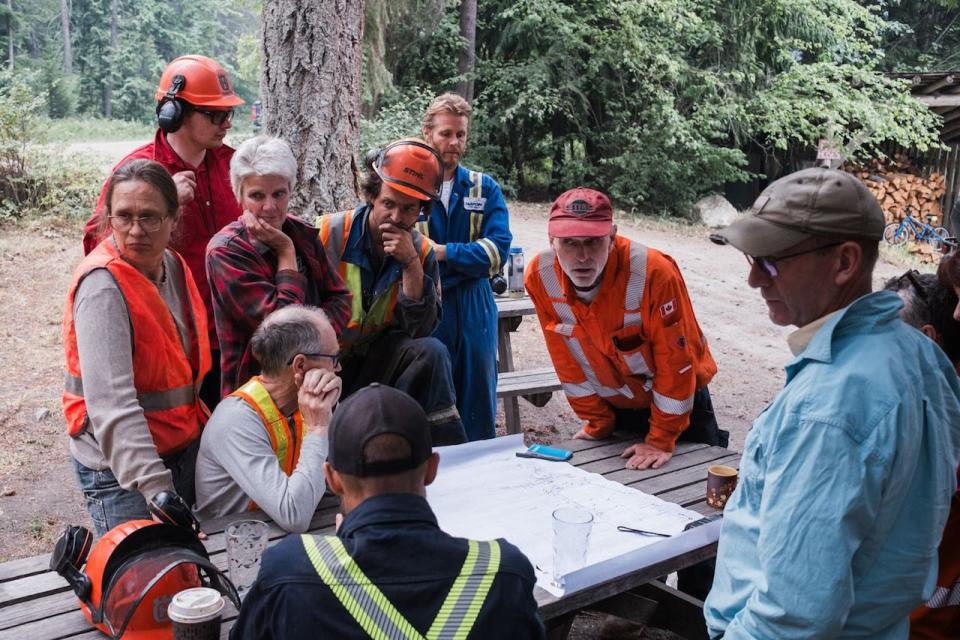A water mapping project in British Columbia’s West Kootenay region aims to make firefighting easier going forward.
Living Lakes Canada and the Argenta Safety and Preparedness Society (ASAP) have released a comprehensive water mapping project document designed to help firefighters find water resources more quickly, ensuring crews are able to focus on fighting fires rather than looking for water sources.
Living Lakes Canada says the Water Resources for Fire Protection document provides comprehensive digital maps that identify all available water sources in the area of Argenta and Johnsons Landing in the West Kootenays.
The document charts high-pressure standpipes, ideal pump deployment sites in streams, locations of buildings and residences, and access routes. Standpipes are pipes with a high pressure water supply, similar to a fire hydrant, but with less pressure.
Working with local knowledge
The document was used by firefighters battling the Argenta Creek wildfire just east of the two communities.
The Argenta Safety and Preparedness Society, a local fire brigade in Argenta, worked with the B.C. Wildfire Service to fight the fire.
“When our team first shared the maps, both digital and large paper versions, with the on-site provincial crew, they were blown away,” said ASAP crew leader Rik Valentine in a press release.
“No one had ever seen anything like it.”

Argenta Safety and Preparedness Society crew members used the water resources map on July 25 to identify properties with standpipes in order to physically flag them as requested by structural protection units. (Louis Bockner)
Paul Saso is a Nelson-based hydrologist who has been monitoring water resources in the West Kootenay for more than a decade.
Saso worked closely with the Argenta crew to build the water mapping resource. He says it is a major time saver for crews, especially those coming in from other regions or countries.
“You’d never be able to find these kinds of things as a firefighter,” he told CBC News.
Unique water landscape
Saso explained that part of the reason for doing the project in the first place was the challenging nature of Argenta’s hydrology.
“It is a really odd region hydrologically, it makes it difficult for people to find water there, especially in a hurry,” Saso said.
There are many streams, he says, that frequently disappear into the ground, and then reappear further downstream.
He pointed to a particular stream, called Kootenay Joe, where Living Lakes has consistently been monitoring water flow. He says for most of the summer, the stream flows at about 20 litres per second, but there are a few areas that intersect the creek that are completely dry.
“So, as a firefighter arriving there looking for water, they’re going to get there and think there’s nothing there, but you happen to know that there’s 20 litres per second 200 metres above and then again 200 meters below.”
Add to that the fact that some other streams are plotted incorrectly on a typical map.
“So you show up there as a firefighter and you find yourself pretty lost pretty quickly,” Saso said.
Another tool for firefighters
Valentine says the resource played an important role between his crew and the B.C. Wildfire Service.
“Joining up with Living Lakes Canada’s expertise and capacity made it possible to complete the project and come out with a workable end product that has potential to serve as a model for other rural communities,” he said.
Saso adds that the past 12 years of resources helped create the detailed maps, and while this type of mapping takes time and resources, he’s hopeful other communities will be able to adopt similar strategies.


Argenta Creek fire with the community spread out on the bench below the flames. The photo was taken just before evacuation began on July 24, 2024. (Jim Lawrence)
“This was really just an amazing example of how [everyone] came together and they were able to work in collaboration with the B.C. Wildfire crews and it really offered them that local knowledge. Partly through the maps and partly just through the interaction with the crews.”
Both Argenta and Johnson’s Landing were evacuated for two weeks this summer because of the blaze. The Argenta Creek wildfire is now listed as being held at more than 190 square kilometres in size.

